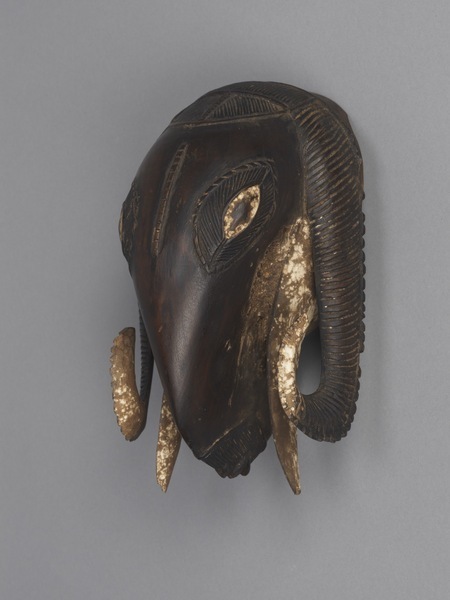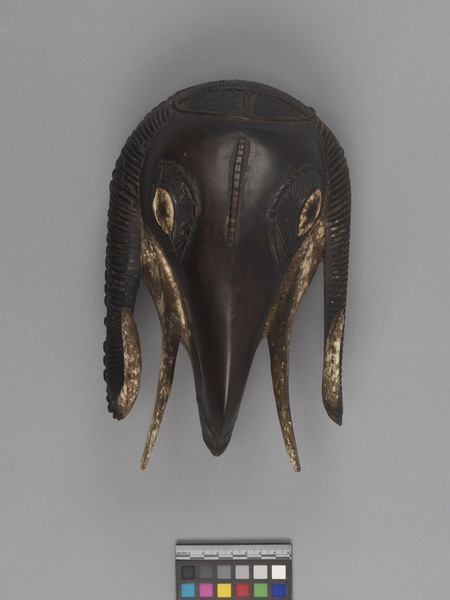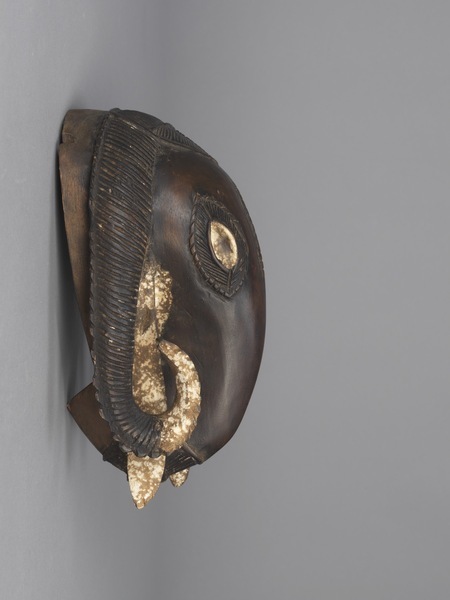Ram Mask Item Number: 3416/2 from the MOA: University of British Columbia




Description
Wooden mask of a ram. Thin, tapering face with O-shaped mouth, long ears and curling horns. Semi-circle design on top centre of head decorated with diagonal and vertical incisions. Two columns of squares carved in low relief down centre of semi-circle. Thin columns of rectangles, carved in low relief, run down centre of face, in between the eyes. Eyes are narrow and vertical, with raised edges, and painted white. Mask is dark brown-red and highly polished. Curled ends of horns are made of sheep horn, painted white. Ears of ram, hanging down between the face and horns, flare outwards from the face and are made of sheep horn, painted white. Two oval-shaped nostrils are above the mouth, with raised edges. Areas around eyes, mouth, nostrils and entirety of horns have incised decorations across them. Mask has small hole for mouth. The back rim of the mask is plain and has two holes along the top for ties.
History Of Use
Goli masquerades, imported during the early twentieth century from the neighbouring Wan, are performed at funerals and popular entertainments.
Narrative
Previously danced (along with ram mask 3416/1).
Iconographic Meaning
In Baule mythology the ram is a spirit of agriculture.
Item History
- Made in Cote d'Ivoire during 1970
- Owned by Kazuhiko Komatsu before December 18, 2019
- Received from Kazuhiko Komatsu (Seller) and Museum of Anthropology Acquisitions Budget (Funding source) on December 18, 2019
What
- Name
- Ram Mask
- Identification Number
- 3416/2
- Type of Item
- mask
- Material
- wood, sheep horn and paint
- Overall
- height 28.3 cm, width 15.7 cm, depth 12.5 cm
Who
- Culture
- Baule
- Previous Owner
- Kazuhiko Komatsu
- Received from
- Kazuhiko Komatsu (Seller) and Museum of Anthropology Acquisitions Budget (Funding source)
Where
- Holding Institution
- MOA: University of British Columbia
- Made in
- Cote d'Ivoire
When
- Creation Date
- during 1970
- Ownership Date
- before December 18, 2019
- Acquisition Date
- on December 18, 2019
Other
- Condition
- fair
- Accession Number
- 3416/0002